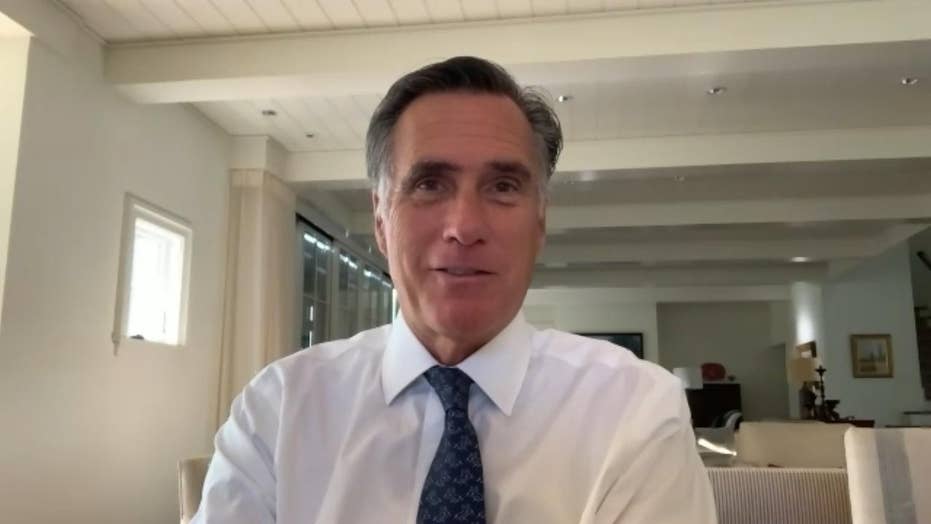
Sally Pipes: Medicare for none – these are the reforms we need to keep program solvent
by Sally PipesDemocratic presidential nominee Joe Biden is proposing to expand Medicare by lowering the eligibility age from 65 to 60. But the program can't afford the bill for its existing crop of beneficiaries, much less the $100 billion that would be required to enroll 22 million more under Biden's plan.
That's among the conclusions to draw from a new Congressional Budget Office report. The agency now projects that Medicare's Part A hospital insurance trust fund will run out of cash in just four years – two years earlier than previous estimates.
This fiscal emergency was predictable. After all, Medicare has flirted with insolvency since its creation more than half a century ago. But the economic turmoil resulting from the COVID-19 lockdowns has brought the program's already shaky finances even closer to collapse.
SALLY PIPES: CORONAVIRUS LOCKDOWN BENEFITS REMAIN DUBIOUS AS COSTS CONTINUE TO MOUNT
Without significant reforms to the basic structure of the entitlement, Medicare as we know it won't survive much longer.
To see how COVID-19 could have dealt such a blow to Medicare, consider the program's pay-as-you-go funding model.
CLICK HERE TO GET THE OPINION NEWSLETTER
Payroll taxes collected from current workers go to finance coverage for Medicare's 64 million beneficiaries, primarily people over the age of 65. Twenty-two million of those beneficiaries are enrolled in privately administered Medicare Advantage plans.
We're running out of workers to finance the program. Seniors are the fastest-growing segment of the population. As the relative size of the workforce shrinks, and the number of beneficiaries grows, it's only a matter of time until Medicare's trust fund runs out of money.
But COVID-19 has revealed another major flaw with this arrangement – its vulnerability to labor-market disruptions. Millions of previously employed Americans are now jobless. They're not receiving a paycheck – and the government isn't taking its cut of their wages. This unfortunate situation is reflected in the CBO's latest numbers.
Sadly, Congress seems poised to do what it always does in the face of a Medicare funding crisis – nothing.
But significant change is what this moment calls for, if we're to have any hope of saving the program. According to the Medicare Payment Advisory Commission, a nonpartisan congressional agency, spending on Medicare Part A would need to decrease by 17 percent in order for the program to remain solvent for the next 25 years.
Fortunately, there are many sensible ways of realizing these savings without jeopardizing access to care.
A combination of reforms would create an incentive for patients to be cost-conscious when consuming health care – and save Medicare money in the process.
We could means-test the program, so wealthier Americans pay more for Medicare coverage than those who are less well-off.
Raising the eligibility age is yet another way to shore up Medicare's finances. Fifty-five years ago, when the program was created, U.S. life expectancy was just over 70 years. Now it's more than 78 years. So the average beneficiary is collecting benefits for much longer.
Ensuring long-term solvency will require a much more dramatic remake of the program. Lawmakers could consider a premium-support model, in which the federal government provides cash to seniors to help them purchase private coverage in a new market.
This approach, long championed by former House Speaker Paul Ryan, R-Wis., would force insurers to compete against one another on price and value. In so doing, it would drive down overall Medicare costs while giving seniors the freedom to choose health plans that are right for them.
A 2017 CBO report found that a premium-support system could reduce federal Medicare spending by as much as $419 billion between 2022 and 2026.
Lawmakers could also allow Medicare beneficiaries to contribute to health savings accounts, or HSAs, which is currently illegal. These accounts enable patients to set aside money, tax-free, for out-of-pocket medical expenses.
When combined with a premium-support model, they could put enormous downward pressure on overall Medicare spending. Patients who chose an insurance plan that cost less than Medicare's premium subsidy could put the difference in their HSAs.
In this way, such a combination of reforms would create an incentive for patients to be cost-conscious when consuming health care – and save Medicare money in the process.
CLICK HERE FOR THE FOX NEWS APP
These are the sorts of large-scale reforms needed to rescue Medicare from fiscal calamity. Yet few in Washington have the courage to defend such proposals.
Such obliviousness and wishful thinking are what have made Medicare's finances so dire. Unless policymakers take a sober look at the numbers undergirding the program, and embrace real reforms, the result could soon be Medicare for none.